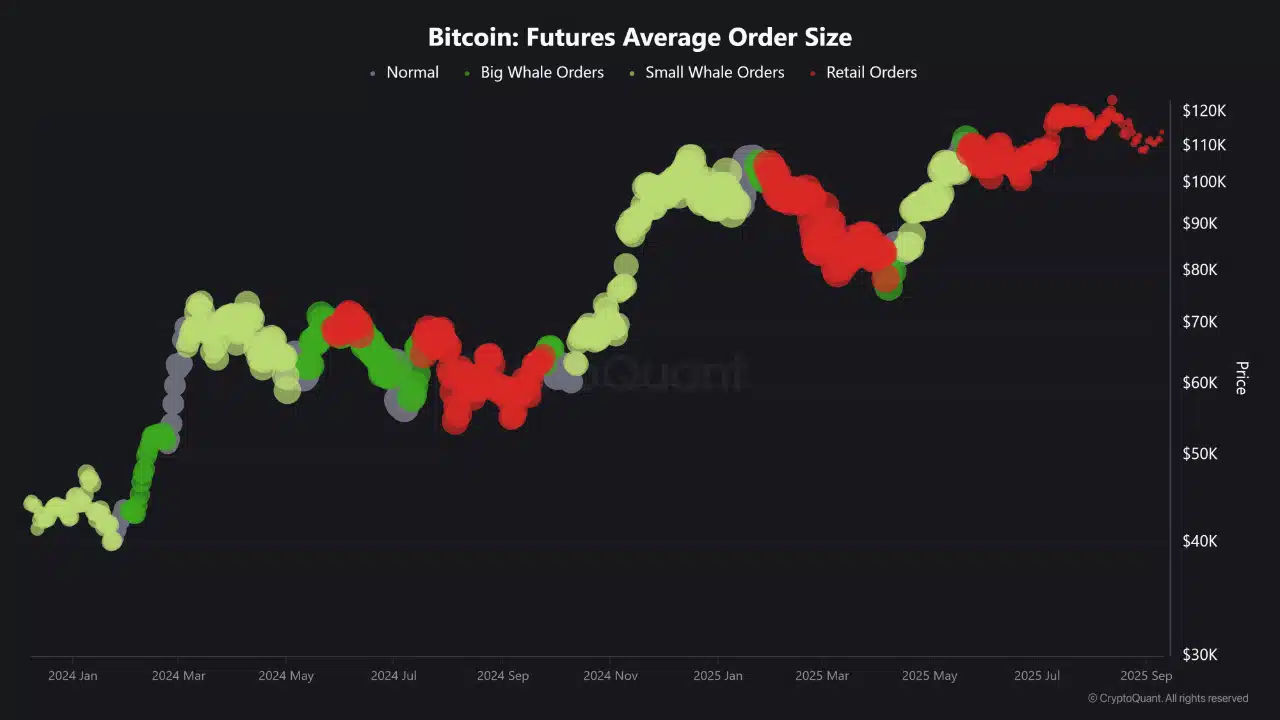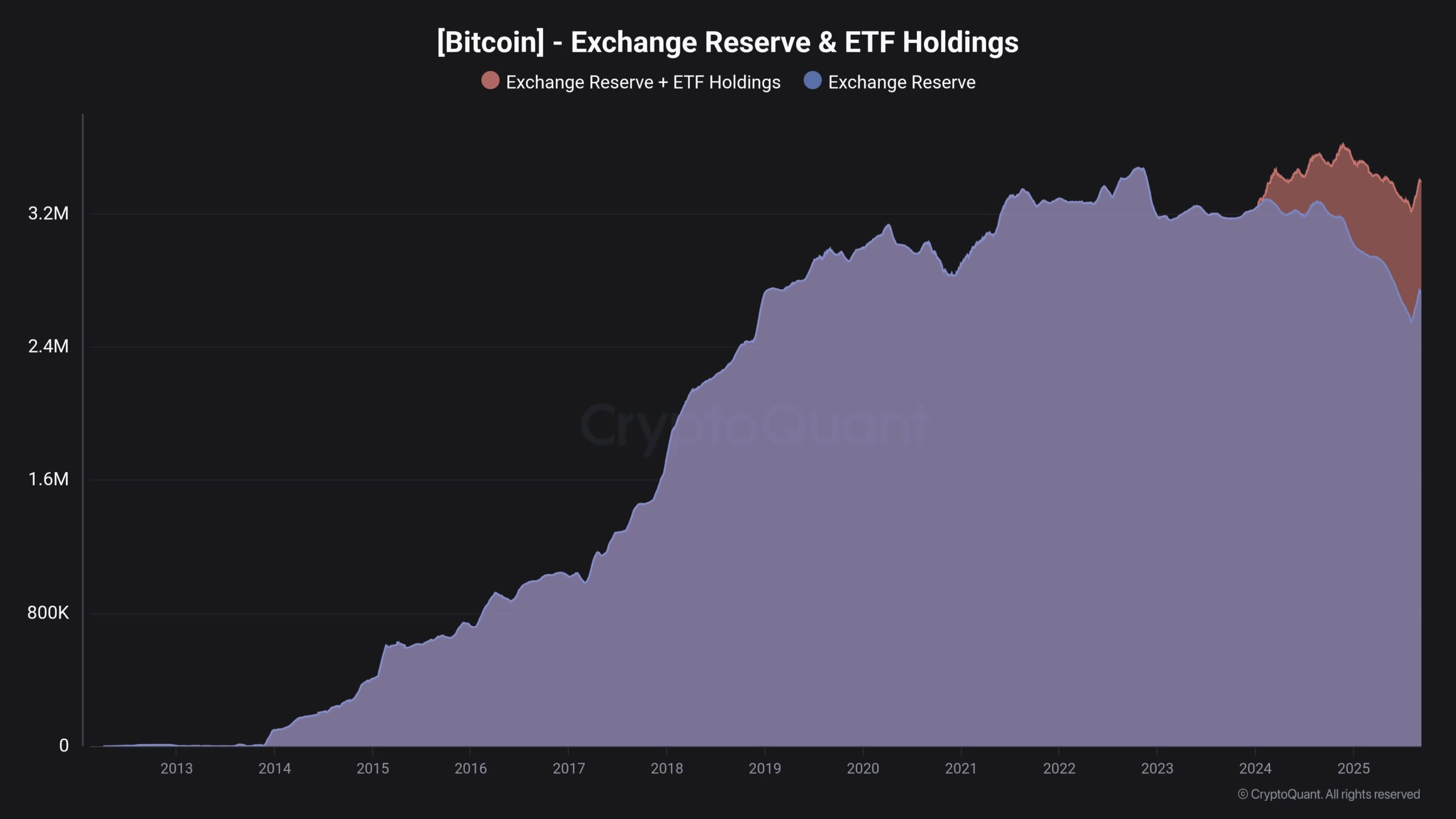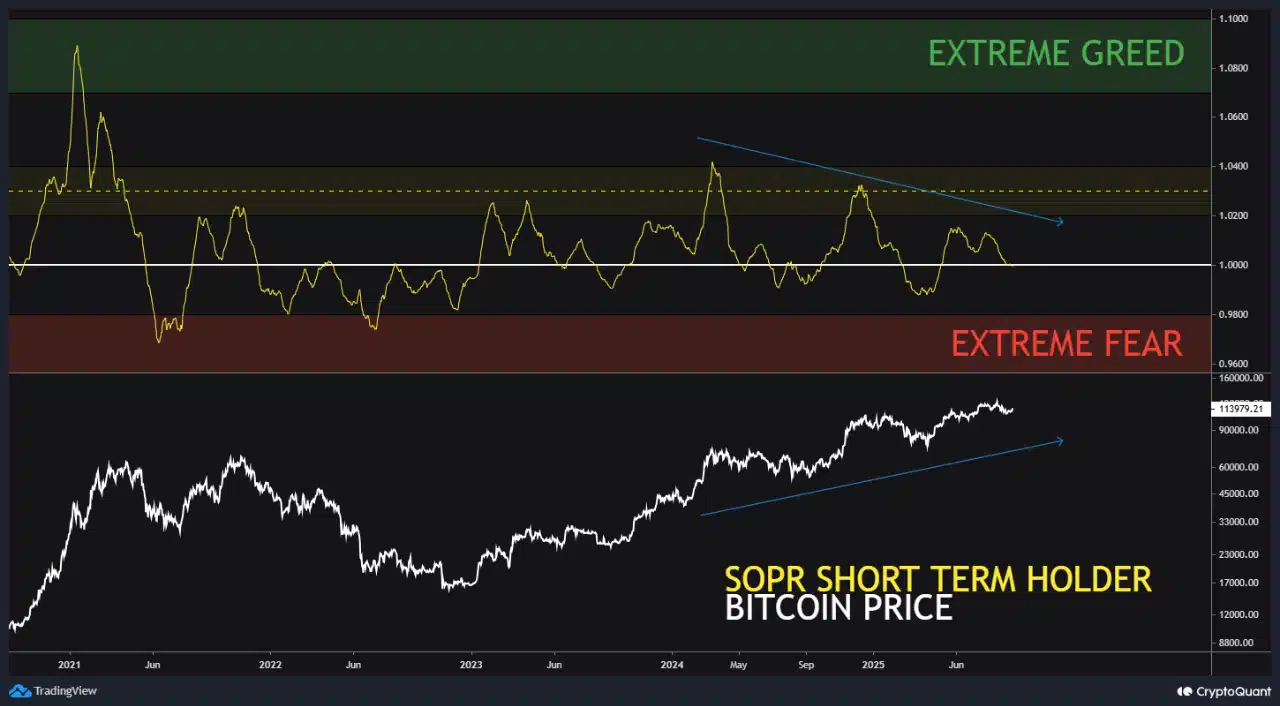Bitcoin Could Stay Range-Bound as Whales Retreat and ETF Flows Shift Supply
BTC
BTC/USDT
$11,892,341,556.47
$92,519.95 / $90,236.00
Change: $2,283.95 (2.53%)
+0.0040%
Longs pay
Contents
Bitcoin price action is in a neutral, choppy range as large whales step back and retail traders drive short-term moves; ETF custody flows explain much of the exchange outflows and short-term holder selling, suggesting a pause rather than a definitive trend reversal.
-
Whales pause: retail trading now creates range-bound price action.
-
Exchange outflows largely reflect transfers into ETF custodians, not net scarcity.
-
Short-term holders show loss-taking (SOPR < 1), indicating a temporary breather, not a confirmed reversal.
Bitcoin price action: Whales step back, ETF flows absorb coins, retail drives chop — read key signals and implications for traders. Learn more.
What is driving Bitcoin’s current price action?
Bitcoin price action is primarily driven by a shift in market participants: large whales have paused major trade cycles while retail traders increase intraday activity, producing sideways, choppy moves. ETF custody transfers and measured institutional demand keep the larger uptrend intact despite short-term volatility.
How are ETF flows affecting Bitcoin supply and exchange reserves?
Exchange reserves have dropped, but much of the reduction is explained by transfers from centralized exchanges into ETF custodians. Plain-text data sources such as CryptoQuant show that when ETF-held coins are counted alongside exchange balances, the net available supply has not fallen as dramatically as raw reserve figures suggest.
In practice this means:
- Apparent exchange outflows may overstate a true supply shock.
- ETF custody moves reduce circulating exchange liquidity without destroying supply.
- Until ETFs produce persistent fresh inflows, market impact remains limited.
Why have whales stepped back and what does that mean for traders?
Between early April and late May, large on-chain holders completed major repositioning, lowering their on-exchange exposure. With whale activity reduced, retail traders now create the bulk of short-term volume.
This shift tends to increase false breakouts and range-bound squeezes. Historically, whales re-enter at strong supports or when trend confirmations appear; their reappearance could trigger rapid directional moves.
Why are short-term holders selling and what does SOPR indicate?
Short-term holders (STHs) have begun selling at a loss after months of unrealized gains, as shown by SOPR dipping below the neutral 1 line. This loss-taking often represents profit defense or micro-position rebalancing rather than capitulation.
If SOPR recovers above 1 and key support levels hold, the broader uptrend—driven by institutions—remains likely to continue. For now, the market looks like it’s consolidating, not reversing.
Whales step back, leaving retail to drive the chop
One key reason Bitcoin is drifting sideways comes down to who’s in charge of the chart.
Between early April and late May, both big and small whales finished their heavy moves, unloading or repositioning while volumes were high. Since then, the market has been left mostly to retail traders, and the result is predictable: sideways, choppy price action filled with squeezes and fakeouts.


Source: CryptoQuant
Supply crunch? Not quite.
Discussion about a supply shock is overstated when ETF custodial balances are considered. Raw exchange-reserve declines look dramatic, but many of those coins are being moved into long-term custody for ETFs rather than sold into the market.


Source: CryptoQuant
Loss-taking is a breather for now
STHs have slipped back into selling at a loss after four months of steady gains, as shown by SOPR dipping under the neutral 1 line. At first glance, that might look bearish, but context matters.


Source: CryptoQuant
Frequently Asked Questions
How long might Bitcoin stay range-bound with whales inactive?
Range-bound periods can last weeks to months. Historically, when whales pause after large moves, consolidation persists until either whales re-enter at support or a new macro catalyst appears. Watch whale re-accumulation and ETF inflows as key triggers.
Is the drop in exchange reserves a true supply shortage?
No. Much of the reserve decline reflects transfers into ETF custody rather than permanent removal from circulation. Counting ETF-held coins alters the apparent supply picture, reducing the likelihood of an imminent supply-driven squeeze.
Key Takeaways
- Participant shift: Whales stepping back has increased retail-driven chop.
- ETF custody: Exchange outflows often move to ETF custodians, moderating scarcity claims.
- SOPR context: Short-term holder loss-taking looks like a temporary pause; monitor SOPR and support levels for trend confirmation.
Conclusion
Bitcoin price action currently reflects a tug-of-war between sidelined whales, measured institutional flows into ETFs, and active retail traders. Bitcoin whales stepping back and ETF custody transfers explain much of the apparent reserve decline, while SOPR readings suggest a temporary breather rather than a structural reversal. Monitor whale re-entry, ETF inflows, and SOPR to assess the next directional move; COINOTAG will continue tracking on-chain indicators and institutional flow data.
Comments
Yorumlar
Other Articles
Bitcoin Price Analysis: Will the Uptrend Continue?
1/11/2026
Ethereum 2.0 Update: How Will It Affect the Crypto Market?
1/10/2026
The Coming of Altcoin Season: Which Coins Will Stand Out?
1/9/2026
DeFi Protocols and Yield Farming Strategies
1/8/2026

